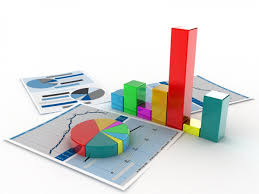Manufacturing growth improves slightly in April 2018: PMI
The Nikkei India Manufacturing Purchasing Managers’ Index (PMI) rose to 51.6 in April 2018 form from 51 in March 2018. It indicates faster improvement in health of India’s manufacturing economy than in prior month.
Key Facts
PMI showed that manufacturing conditions improved for ninth consecutive month in April 2018. It was mainly because of faster expansions in output and new orders. Moreover, greater production requirements also stimulated job creation and encouraged companies to engage in input buying. The Output growth was solid and picked-up from March’s five-month low, but remained slightly below average for current nine-month period of expansion. On the price front, inflationary pressures continue to ease in April 2018, with softest increases for input costs and output charges reported since September 2017 and July 2017 respectively.
Purchasing Managers Index (PMI)
PMI is considered as an indicator of the economic health and investor sentiments about the manufacturing sector. It is published by Japanese firm Nikkei. The PMI is constructed separately for manufacturing and services sector. But the manufacturing sector holds more importance. In PMI, a reading above 50 indicates economic expansion, while reading below 50 points shows contraction of economic activities. PMI shows investor sentiment in economy’s manufacturing sector and is seen as sentiment tracking index. The variables used to construct India’s PMI are Output, New Orders, Input Costs, Output Prices, Backlogs of Work, Export Orders, Quantity of Purchases, Suppliers and Delivery Times, Employment, Stocks of Purchases and Stocks of Finished Goods
How PMI is different from IIP?
Index of Industrial Production (IIP) is popular index that measures growth in industrial sector in India is concerned. It is prepared by Central Statistical Office (CSO). IIP shows change in production volume or output in major industrial subsectors like manufacturing, mining and electricity. It also gives use based (capital goods, consumer goods etc,) trends in industrial production. It covers broader industrial sector compared to PMI. PMI senses dynamic trends because of variable it uses for the construction of the index. PMI is more dynamic compared to IIP.
Month: Current Affairs - May, 2018


